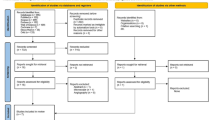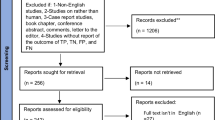Abstract
Cerebral aneurysm formation is the result of a complex interplay of systemic and local factors. Among the latter, the role of the geometry of the vessel hosting an aneurysm, of the upstream vasculature and the induced hemodynamics still need to be carefully investigated. In this paper we combine computational fluid dynamics analysis and morphological characterization and carry out the statistical investigation of the features of the internal carotid artery (ICA) of 52 patients affected by a cerebral aneurysm. The functional principal component analysis performed on the geometric and fluid dynamics features of the patients reveals correlations with the location of the aneurysm in the cerebral circulation and its rupture status. This allows a clustering of the patients that is anticipated to contribute to the design of an index for the rupture risk. In particular, ICA featuring a pronounced WSS peak are statistically inclined to hosting ruptured aneurysms. Moreover, our statistical results suggest that patients with a double-bend siphons (S-class) are less prone to the development of cerebral aneurysms.












Similar content being viewed by others
References
Abou-Arab, T. W., T. K. Aldoss, and A. Mansour. Pressure drop in alternating curved tubes. Appl. Sci. Res. 48(1):1–9, 1991.
Antiga, L., M. Piccinelli, L. Botti, B. Ene-Iordache, A. Remuzzi, and D. Steinman. An image-based modeling framework for patient-specific computational hemodynamics. Med. Biol. Eng. Comput. 46(11):1097–1112, 2008.
Antiga, L., and D. A. Steinman. Robust and objective decomposition and mapping of bifurcating vessels. IEEE Trans. Med. Imaging 23:704–713, 2004.
Barlow, J. Optimal stress location in finite element method. Int. J. Numer. Methods Eng. 10:243–251, 1976.
Burman, E., M. Fernandez, and P. Hansbo. Continuous interior penalty finite element method for Oseen’s equations. SIAM J. Numer. Anal. 44:1248–1274, 2006.
Castro, M. A., C. M. Putman, and J. R. Cebral. Patient-specific computational fluid dynamics modeling of anterior communicating artery aneurysms: a study of the sensitivity of intra-aneurysmal flow patterns to flow conditions in the carotid arteries. AJNR Am. J. Neuroradiol. 27:2061–2068, 2006.
Cebral, J. R., M. A. Castro, J. E. Burgess, R. S. Pergolizzi, M. J. Sheridan, and C. M. Putman. Characterization of cerebral aneurysms for assessing risk of rupture by using patient-specific computational hemodynamics models. AJNR Am. J. Neuroradiol. 26:2550–2559, 2005.
Cebral, J., F. Mut, J. Weir, and C. Putman. Association of hemodynamic characteristics and cerebral aneurysm rupture. Am. J. Neuroradiol. 32(2):264–270, 2010.
Chien, A., S. Tateshima, J. Sayre, M. Castro, J. Cebral, and F. Viuela. Patient-specific hemodynamic analysis of small internal carotid artery-ophthalmic artery aneurysms. Surg. Neurol. 72(5):444–450, 2009.
Dhar, S., M. Tremmel, J. Mocco, M. Kim, J. Yamamoto, A. Siddiqui, L. Hopkins, and H. Meng. Morphology parameters for intracranial aneurysm rupture risk assessment. Neurosurgery 63(2):185–196, 2008.
Formaggia, L., A. Quarteroni, and A. Veneziani (eds.). Cardiovascular Mathematics. Berlin: Springer, 2009.
Hoi, Y., H. Meng, S. Woodward, B. Bendok, R. Hanel, L. Guterman, and L. Hopkins. Effects of arterial geometry on aneurysm growth: three-dimensional computational fluid dynamics study. J. Neurosurg. 101(4):676–681, 2004.
Imai, Y., K. Sato, T. Ishikawa, and T. Yamaguchi. Inflow into saccular cerebral aneurysms at arterial bends. Ann. Biomed. Eng. 36(9):1489–1495, 2008.
Jou, L., D. Lee, H. Morsi, and M. Mawad. Wall shear stress on ruptured and unruptured intracranial aneurysms at the internal carotid artery. Am. J. Neuroradiol. 29(9):1761–1767, 2008.
Krayenbuehl, H., P. Huber, and M. G. Yasargil. Krayenbuhl/Yasargil Cerebral Angiography, 2nd edn. New York: Thieme Medical Publishers, 1982.
LIFEV software. Accessed Dec 23, 2011, from http://www.lifev.org.
Moyle, K., L. Antiga, and D. A. Steinman. Inlet conditions for image-based CFD models of the carotid bifurcation: is it reasonable to assume fully developed flow? J. Biomech. Eng. 128:371–379, 2006.
Nichols, W. W., and M. F. O’Rourke. McDonald’s Blood Flow in Arteries: Theoretical, Experimental and Clinical Principles. A Hodder Arnold Publication. London: Oxford University Press, 1998.
Nixon, A., M. Gunel, and B. Sumpio. The critical role of hemodynamics in the development of cerebral vascular disease. J. Neurosurg. 112(6):1240–1253, 2010.
Osenberg, H. Simulation des arteriellen blutflusses: Ein allgemeines modell mit anwendung auf das menschliche hirngefasssystem. Ph.D. thesis, Zurich, 1991.
Paraview Web Site. Accessed Dec 23, 2011, from http://www.paraview.org.
Passerini, T. Computational hemodynamics of the cerebral circulation: multiscale modeling from the circle of willis to cerebral aneurysms. Thesis, Politecnico di Milano, 2009.
Passerini, T., M. Piccinelli, and A. Veneziani. Aneurisk repository. Accessed Dec 23, 2011, from http://ecm2.mathcs.emory.edu/aneurisk/
Piccinelli, M., S. Bacigaluppi, E. Boccardi, B. Ene-Iordache, A. Remuzzi, A. Veneziani, and L. Antiga. Geometry of the ICA and recurrent patterns in location, orientation and rupture status of lateral aneurysms: an image-based computational study. Neurosurgery 68(5):1270–1285, 2011.
Piccinelli, M., A. Veneziani, D. A. Steinman, A. Remuzzi, and L. Antiga. A framework for geometric analysis of vascular structures: applications to cerebral aneurysms. IEEE Trans. Med. Imaging 28(8):1141–1155, 2009.
Prosi, M., K. Perktold, and H. Schima. Effect of continuous arterial blood flow in patients with rotary cardiac assist device on the washout of a stenosis wake in the carotid bifurcation: a computer simulation study. J. Biomech. 40(10):2236–2243, 2007.
R Development Core Team. R: A Language and Environment for Statistical Computing. Vienna: R Foundation for Statistical Computing, 2010.
Raghavan, M., B. Ma, and R. E. Harbaugh. Quantified aneurysm shape and rupture risk. J. Neurosurg. 102(2):355–362, 2005.
Ramsay, J. O., and B. W. Silverman. Functional Data Analysis. New York: Springer, 2005.
Rappitsch, G., and K. Perktold. Computer simulation of convective diffusion processes in large arteries. J. Biomech. 29(2):207–215, 1996.
Sangalli, L. M., P. Secchi, S. Vantini, and A. Veneziani. A case study in exploratory functional data analysis: geometrical features of the internal carotid artery. J. Am. Stat. Assoc. 104(485):37–48, 2009.
Sangalli, L. M., P. Secchi, S. Vantini, and A. Veneziani. Efficient estimation of three-dimensional curves and their derivatives by free knot regression splines, applied to the analysis of inner carotid artery centrelines. J. R. Stat. Soc. C 58(3):285–306, 2009.
Sangalli, L. M., P. Secchi, S. Vantini, and V. Vitelli. Joint clustering and alignment of functional data: an application to vascular geometries. In: Joint Statistical Meetings Proceedings, pp. 4034–4047, 2010.
Sangalli, L. M., P. Secchi, S. Vantini, and V. Vitelli. K-means alignment for curve clustering. Comput. Stat. Data Anal. 54:1219–1233, 2010.
Sato, K., Y. Imai, T. Ishikawa, N. Matsuki, and T. Yamaguchi. The importance of parent artery geometry in intra-aneurysmal hemodynamics. Med. Eng. Phys. 30(6):774–782, 2008.
Schoberl, J. Netgen Web Site. Accessed Dec 23, 2011, from http://www.hpfem.jku.at/netgen/.
Sforza, D., C. Putman, and J. R. Cebral. Hemodynamics of cerebral aneurysms. Annu. Rev. Fluid Mech. 41:91–107, 2009.
Takao, H., Y. Murayama, Y. Qian, A. Mohamed, W. Matsuda, M. Umezu, and T. Abe. O-018 a new hemodynamic parameter: energy loss to anticipate aneurysm rupture. J. NeuroInterv. Surg. 2(Suppl 1):A8, 2010.
Van Gijn, J., R. S. Kerr, and G. J. Rinkel. Subarachnoid haemorrhage. Lancet 369(9558):306–318, 2007.
Veneziani, A., and C. Vergara. An approximate method for solving incompressible Navier–Stokes problems with flow rate conditions. Comput. Methods Appl. Mech. Eng. 196(9–12):1685–1700, 2007.
VMTK software. Accessed Dec 23, 2011, from http://www.vmtk.org.
Xiang, J., S. Natarajan, M. Tremmel, D. Ma, J. Mocco, L. Hopkins, A. Siddiqui, E. Levy, H. Meng. Hemodynamic-morphologic discriminants for intracranial aneurysm rupture. Stroke 42(1):144–152, 2011.
Zienkiewicz, O., R. Taylor, and J. Too. Reduced integration technique in general analysis of plates and shells. Int. J. Numer. Methods Eng. 3(2):275–290, 1971.
Acknowledgments
Laura Sangalli is partially supported by the Italian MIUR FIRB research project “Advanced statistical and numerical methods for the analysis of high dimensional functional data in life sciences and engineering”. Marina Piccinelli, Tiziano Passerini and Alessandro Veneziani acknowledge the support of the Brain Aneurysm Foundation. All the participants acknowledge the support of the Italian Fondazione Politecnico di Milano and the SIEMENS Medical Solutions, Italy for the support to the Aneurisk project (Partners of Aneurisk: MOX—Department of Mathematics, Politecnico di Milano (PI institution), M. Negri Institute, Bergamo, Department of Neurosurgery, Niguarda Ca’Granda Hospital, Milan, Department of Neurosciences, University of Milan, LABS—Department of Civil Engineering, Politecnico di Milano). Alessandro Veneziani wishes to thank Dr. Frank Tong (Emory Hospital) for fruitful discussions. Susanna Bacigaluppi dedicates her contribution to this work to the memory of Dr. M. Collice.
Disclosure of Potential Conflicts of Interest
All the authors of the present paper declare that they do not have any conflict of interest with the results of the research presented here.
Author information
Authors and Affiliations
Corresponding author
Additional information
Communicated by Yi-Ren Woo.
Rights and permissions
About this article
Cite this article
Passerini, T., Sangalli, L.M., Vantini, S. et al. An Integrated Statistical Investigation of Internal Carotid Arteries of Patients Affected by Cerebral Aneurysms. Cardiovasc Eng Tech 3, 26–40 (2012). https://doi.org/10.1007/s13239-011-0079-x
Received:
Accepted:
Published:
Issue Date:
DOI: https://doi.org/10.1007/s13239-011-0079-x
Keywords
- Cerebral aneurysms
- Image processing
- Computational fluid dynamics
- Functional principal component analysis




